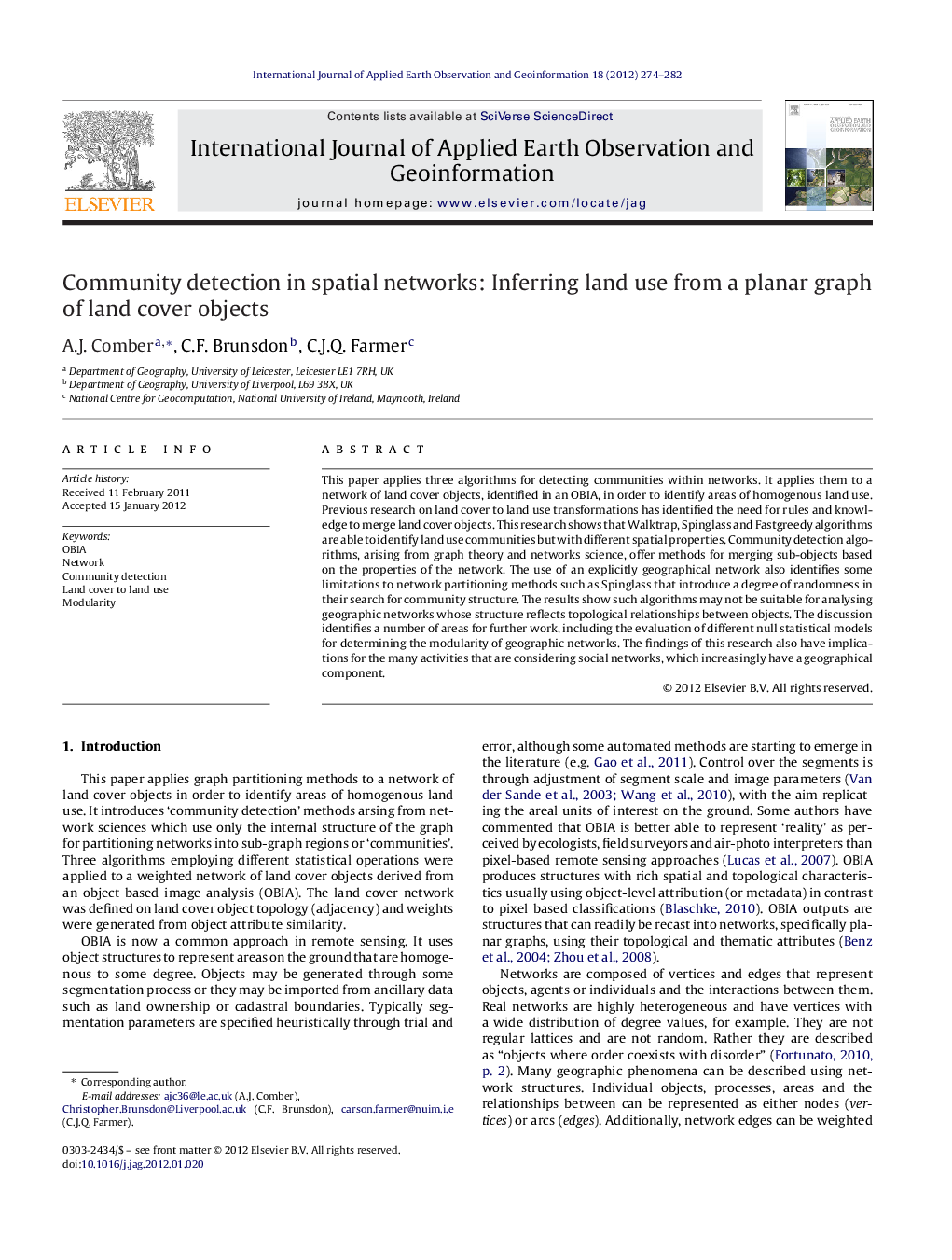| Article ID | Journal | Published Year | Pages | File Type |
|---|---|---|---|---|
| 4464932 | International Journal of Applied Earth Observation and Geoinformation | 2012 | 9 Pages |
This paper applies three algorithms for detecting communities within networks. It applies them to a network of land cover objects, identified in an OBIA, in order to identify areas of homogenous land use. Previous research on land cover to land use transformations has identified the need for rules and knowledge to merge land cover objects. This research shows that Walktrap, Spinglass and Fastgreedy algorithms are able to identify land use communities but with different spatial properties. Community detection algorithms, arising from graph theory and networks science, offer methods for merging sub-objects based on the properties of the network. The use of an explicitly geographical network also identifies some limitations to network partitioning methods such as Spinglass that introduce a degree of randomness in their search for community structure. The results show such algorithms may not be suitable for analysing geographic networks whose structure reflects topological relationships between objects. The discussion identifies a number of areas for further work, including the evaluation of different null statistical models for determining the modularity of geographic networks. The findings of this research also have implications for the many activities that are considering social networks, which increasingly have a geographical component.
► Network sciences and graph theory community detection methods were applied to an explicitly geographical case study. ► Land cover objects arising from an object based image analysis were cast into a weighted network based on their topological and attribute relations. ► Three algorithms (Spinglass, Walktrap and Fastgreedy) were applied to the network to merge land cover objects into communities of homogenous land use. ► The merges were based on internal properties not on any expert knowledge or rules. ► The results have implications for analysis of the very many social networks that increasingly have a geographical component (geo-tag).
